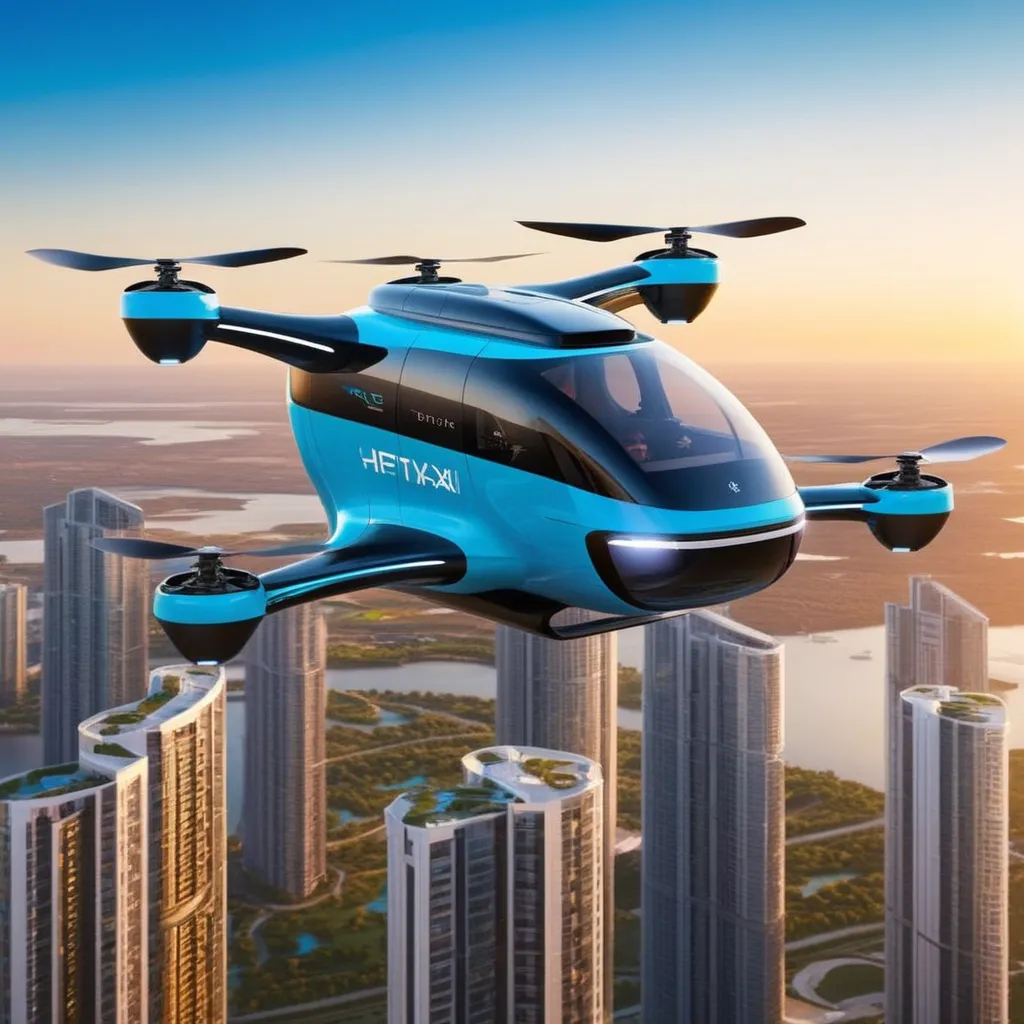World's First Flying Taxi Service Launches in New York
Imagine looking up at the sky and seeing a futuristic flying taxi silently gliding through the air. It sounds like something out of a science fiction movie, but it's now a reality in New York. The world's first flying taxi service has taken flight, promising to revolutionize urban transportation and change the way we commute.

The Urban Transportation Challenge
In bustling cities like New York, traffic congestion is a daily struggle. Long commutes, honking horns, and the stress of navigating crowded streets have become the norm for many. It's a problem that has been begging for a solution.
Personal Experience
I've spent my fair share of hours stuck in traffic, inching along city streets, and wishing for a more efficient way to get from point A to point B. The idea of a flying taxi service always seemed like a dream, but it's now becoming a reality.
The Emergence of Flying Taxis
The concept of flying cars has captured our imagination for decades, but only recently have technological advancements made them feasible.
1. Electric Vertical Takeoff and Landing (eVTOL) Aircraft
These aircraft, often referred to as flying taxis, are electrically powered and capable of taking off and landing vertically. They offer a promising solution to urban congestion.
2. Pioneering Companies
Several companies have been developing eVTOL aircraft, with a focus on safety, efficiency, and environmental sustainability.
3. New York Takes Flight
New York City, known for its innovation and ambition, has become the launchpad for the world's first flying taxi service.
The Benefits of Flying Taxis
The introduction of flying taxis offers numerous advantages that could transform urban living.
1. Reduced Traffic Congestion
With the ability to bypass ground traffic, flying taxis can significantly reduce congestion and cut down commuting times.
2. Environmental Benefits
Electric-powered flying taxis produce fewer emissions compared to traditional vehicles, contributing to cleaner urban air.
3. Accessibility
Flying taxis promise greater accessibility to areas that are hard to reach due to traffic or limited transportation options.
The Challenges Ahead
While the concept of flying taxis is exciting, there are challenges to address.
1. Infrastructure
Creating the necessary infrastructure for flying taxis, such as landing pads and air traffic management systems, is a complex endeavor.
2. Safety and Regulation
Ensuring the safety of flying taxis and establishing clear regulations are critical to their successful integration into urban environments.
3. Affordability
Making flying taxis accessible and affordable to a broad range of residents will be essential for their widespread adoption.
A Glimpse into the Future
The launch of the world's first flying taxi service represents a significant leap forward in urban transportation. It's a glimpse into a future where commuting is no longer synonymous with traffic jams and frustration.
Personal Perspective
Reflecting on the transition from gridlock to the promise of urban mobility through flying taxis, it's evident that we're on the cusp of a transportation revolution. It's a reminder that human innovation knows no bounds when it comes to improving our daily lives.
In conclusion, the debut of the world's first flying taxi service in New York heralds a new era in urban transportation. While challenges lie ahead, the potential benefits, including reduced congestion, improved air quality, and greater accessibility, make this innovation a cause for excitement. As we navigate the skies of the future, let's do so with an eye toward responsible and sustainable urban mobility.

No comments:
Post a Comment